Old mechanical relays have two drawbacks - low speed and limited resource in terms of the number of permissible switchings. The electronic switches that came to replace them (another name is a solid-state transistor or triac relay) are completely devoid of these shortcomings, which attracted the attention of electronics specialists to them. The absence of mechanical parts, as well as the simplicity of the circuit, make it easy to assemble them at home. To cope with this task will help to familiarize yourself with the features of the device and the principle of operation of these elements.
What are solid state relays and their classification
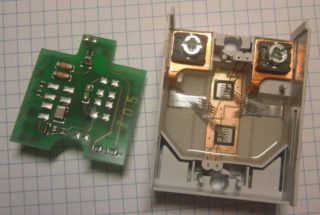
Solid state relays (or SSRs) are electronic devices with a structure free of mechanical components. The principle of their operation is based on the peculiarities of the operation of semiconductor junctions, characterized by a high switching speed and protection from physical fields.
The switching of solid state relays is based on the principle of electronic key actuation.
These products traditionally use common electronic components such as transistors, controlled diodes or thyristors as key elements. Depending on the structures used in their manufacture, SSRs are subdivided into devices built on the basis of one of the listed elements (triac relays, for example).
In accordance with the operating modes and the type of switched voltages, samples of solid-state relays manufactured on the basis of semiconductors are divided into the following groups:
- devices switching direct current;
- devices that control the operation of load lines with variable current parameters;
- universal products operating in various circuits.
For the first devices, the control of constant voltages of no more than 32 volts is characteristic. Representatives of the two remaining positions are capable of switching potentials of considerable magnitude (up to tens of kilovolts).
Benefits of TTP
- the ability to switch relatively powerful loads;
- high performance;
- work in conditions of galvanic isolation;
- ability to withstand short-term overload.
No mechanical or electromechanical product can compete with electronic switches. Therefore, new structures based on semiconductors have completely replaced old mechanical designs.
The unique performance characteristics of SSRs allow them to be used without any restrictions with a simultaneous increase in the operating life. All the listed advantages of these devices are an excellent reason to try to assemble a solid-state relay with your own hands. The disadvantages of these products include the need for additional power supply, as well as the need to remove excess heat generated when working with powerful loads.
Self-production
To make a current relay with your own hands, you need to stock up on a number of electronic components that make up the basis of switching circuits. You will also need special materials from which the body of the homemade relay will be made.
Electronic elements
The following common parts are usually used as electronic components used in the self-production of the simplest SSR sample:
- optocoupler MOS3083;
- triac brand VT139-800;
- bipolar transistor of the KT209 series;
- a set of resistors, as well as a zener diode and an LED that serves as an indicator of relay operation.
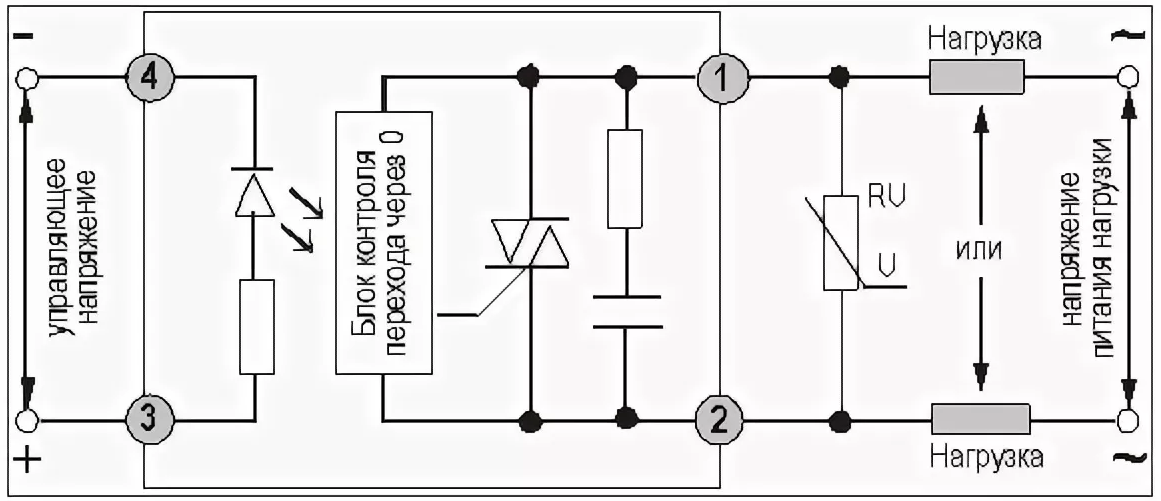
The listed electronic elements are soldered in a hinged way according to the scheme given in the sources. Along with other components, it contains a key transistor that supplies stabilized pulses to the control diode of the optocoupler pair.
The moment of delivery is fixed by an LED element, the use of which in the executive circuit allows visual inspection.
Under the influence of these pulses, an instantaneous operation of the semiconductor triac, included in the switched circuit, occurs. The use of an optocoupler pair in such a switching circuit makes it possible to control constant potentials from 5 to 24 volts.
A limiting chain of a resistor with a zener diode is necessary to reduce the amplitude of the current flowing through the LED and the control element to a minimum value. This circuit design allows you to extend the service life of most of the elements used in the construction of the circuit.
Body construction (filling with compound)
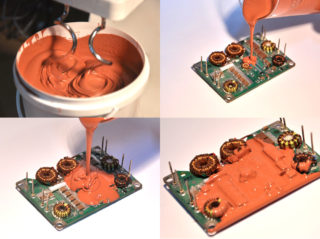
For the manufacture of the body of the prefabricated product, first of all, an aluminum plate with a thickness of 3-5 mm is required, it will serve as the basis for the electronic assembly. The sizes are freely chosen, provided that they guarantee good heat dissipation to the surroundings. Another requirement for this part is a well-processed, absolutely smooth surface, polished with a special tool or sanded to a shine.
In the next step of preparing the body, the plate selected as the base is equipped with an edging made of a strip of cardboard glued around the perimeter. As a result, you will get a small box designed to accommodate the previously assembled electronic circuit. On its basis, only the triac is rigidly attached from the components, all other elements are held within the body by their own connections.
For connection to the load and power supply, the corresponding conductors are brought out of the box.
In the future, reliable fastening of the entire assembly is provided by a liquid compound poured into the box, prepared in advance in a suitable container. After it hardens, you get a monolithic structure, which is not inferior to the best industrial designs in terms of protection from vibrations and other influences. Its only drawback is the impossibility of disassembly for the purpose of subsequent repair of the circuit.
Varieties of TTP
For self-production of a solid-state relay, it is allowed to select other semiconductor structures that can control power circuits: thyristors, for example, or bipolar transistors. The main thing is that they meet the requirements for the functionality of this circuit and the operating parameters of the elements included in it. Everything else depends on the preparedness and attentiveness of the performer.

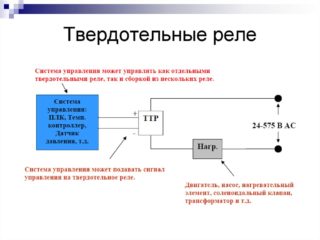
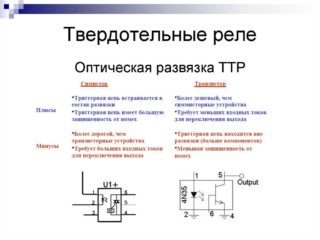








For the money that the brothers ask for such relays - the Chinese are easier to buy a finished product.
optosymistor is a finished product, you need a higher current to switch finished products in elevators on brake coils, and are used with protection against a reverse pulse